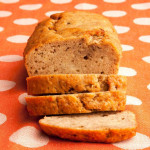 |
| Answered by: Valerie Wojciechowicz Wellness Expert 4HIVHelp.com |
Eating healthy can be confusing. It seems every day there is a new magic diet. The problem with diets, however, is that once the program is completed most people gain the weight back and often more.
The reason being that the eating habits that cause one to be overweight to begin with need to be addressed for lasting success. This is best accomplished by keeping a food journal using your current eating habits. If you write down every single thing you eat and drink, the time of day and the amounts you can usually identify the areas needing improvement. I recommend two weeks for an accurate overview.
If you are using a notebook, keep it with you at all times because most of us cannot accurately recount the day’s nutrition. Many are also finding phone apps and wrist bands trackers like Fit Bits helpful. Entering your results in these apps or trackers give you a quick evaluation. If you do not have access to those items have no fear. Web MD has a user friendly site or use the book titled The Complete Book of Food Counts.
Once you have completed the journal there are several things you will want to evaluate:
- Are you eating breakfast? If the answer is no, this is a common mistake. If you find this is an area that you’d like to work on, think about things that you would be likely to eat and include a good protein source. Our bodies function best if we have protein within an hour of waking. If time is your issue, try hard boiled eggs, string cheese, toast with nut butter or even a protein shake. I often boil a dozen eggs and prepackage two per bag for days when I’m in a hurry.
- Upon honestly evaluating your portions, are they too big or too small? Are you eating three reasonable meals and healthy snacks? Can fast food be replaced with a healthier alternative? Are you drinking enough water?
- Look for sneaky calories. Do you regularly consume soda, fruit juice or alcohol? The sugars found in these beverages add up quickly. Try alternating or totally replacing with water. For example: if you have three sodas per day, replace one with water. The next week try to cut back again and then again the next week. Drastic dietary changes can be a recipe for eventual failure.
- Do you eat out frequently? This is another place for sneaky calories. Food in restaurants is often prepared with ingredients you may not use at home. Portions are also typically larger than one serving and the breads and crackers can also pack on the pounds. If you are going out, you can view menus for most restaurants online before you go and have an idea of ingredients and calorie counts. You can request preparations without sauces or fats. Ask your server not to bring bread and request a to-go box at the beginning of your meal. When your food arrives, immediately place half in the box. You will not be tempted to eat a large portion and have a meal for the next day.
- Are you finding you consume more sweets than you thought? This is also quite common and the empty calories from deserts and candies can keep you from reaching your goals. If you cut them out entirely you may become resentful, so choose a day that you will have desert and enjoy it guilt free.
This can be overwhelming, which is why many people are not successful. We do not gain the weight overnight, therefore we can’t expect to lose it overnight. Identify the areas needing improvement and work on one area at a time. Make gradual improvements and when that change is part of your lifestyle work on the next area. About 1 to 2 lbs a week in weight loss is ideal.
Modifying eating habits and incorporating exercise will put you on the path to achieving your goals.







Comments
Comments